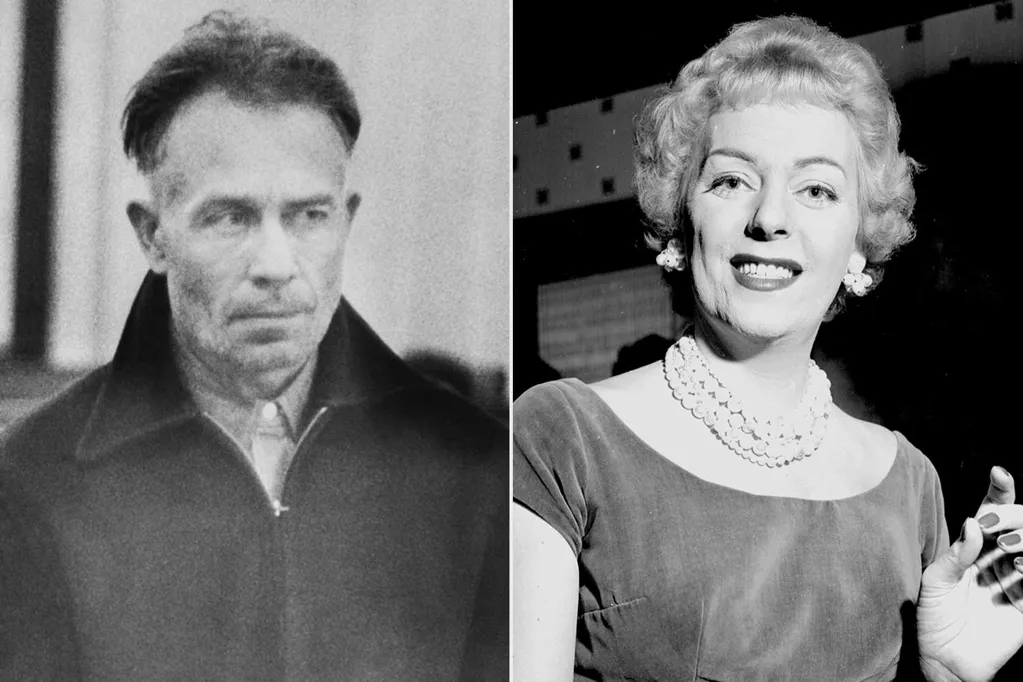Christine Jorgensen is remembered as a key figure in LGBTQ+ history.
In the early 1950s, she captured global attention as one of the first Americans to undergo gender confirmation surgery, becoming a symbol of courage, visibility and the fight for acceptance.
"She is the person who brought what we now call 'transgender' to the attention of a global audience. She was literally the biggest story on the planet in 1952," professor and historian Susan Stryker said in PBS' 2023 documentary (Trans)formation: The Story of Christine Jorgensen.
Jorgensen (Alanna Darby) is depicted in Monster: The Ed Gein Story, which premiered on Oct. 3 and dramatizes the life and crimes of Ed Gein (Charlie Hunnam) -- the infamous American murderer from Wisconsin.
The latest season in Ryan Murphy's Monster anthology series explores Gein's disturbing obsession with death, women's bodies and the macabre. While the series is rooted in real events that took place in the late 1940s and early 1950s, it also takes creative liberties, using fictionalized sequences -- such as hallucinations and imagined conversations -- to explore Gein's inner life and mental state.
Jorgensen and Gein share one of those imagined conversations in Monster, but there is no historical evidence that Gein had any real-life obsession with her.
So, who is Christine Jorgensen?
Jorgensen was a transgender woman who became one of the first people in the United States to gain widespread attention for undergoing gender confirmation surgery.
Born on May 30, 1926, according to The National WWII Museum, she had a traditional, working-class upbringing in the Bronx, New York City.
"[Jorgensen] was a very private, very shy person. I think she felt a profound disconnect between how she experienced herself and how the world perceived her," Styrker said in the PBS doc.
After graduating from high school, Jorgensen served in the U.S. Army during and after World War II as a clerical worker. She was honorably discharged in December 1946, per The National WWII Museum.
"I wanted to be accepted by the army for two reasons," Jorgensen once said, according to the museum. "Foremost was my great desire to belong, to be needed, and to join the stream of activities around me. Second, I wanted my parents to be proud of me."
After leaving the military, Jorgensen attended photography school in Connecticut and later studied to become a dental assistant in N.Y.C. She later discovered a book called The Male Hormone, which helped her understand her feelings and prompted her to start hormone therapy.
Seeking further guidance, Jorgensen spoke with doctors about surgeons in Europe who had experience performing gender confirmation surgeries. She traveled to Denmark in 1950 to undergo hormone treatments and surgical procedures.
Upon arriving in Denmark, Jorgensen met endocrinologist Dr. Christian Hamburger, who agreed to perform her treatment at no cost. Over the next two years, Jorgensen underwent hormone therapy, psychiatric evaluations and surgery to remove her male genitalia. However, she would not receive a surgically constructed vagina until several years later, after returning to the U.S.
Before leaving Denmark, she made one final step in her transformation: She adopted the name Christine in honor of Dr. Hamburger and his life-changing work.
"Nature made a mistake which I have had corrected, and now I am your daughter," she wrote in a coming-out letter to her parents afterwards, per the BBC.
When Jorgensen returned to the U.S., her story quickly made headlines. On Dec. 1, 1952, she appeared on the front page of the New York Daily News under the headline "Ex-GI Becomes Blonde Beauty: Operations Transform Bronx Youth."
In the months that followed, her story was picked up by hundreds of newspapers, turning her into an overnight sensation. She was greeted with fascination, respect and very little hostility, per the BBC.
"I was surprised that everyone seemed very interested in my life ... time went on and I realized this was an important step in the eyes of the world," Jorgensen said at the time, per the museum.
There is no historical evidence that Gein was obsessed with Jorgensen. Gein, the infamous murderer and body snatcher from Wisconsin, had well-documented obsessions with women's bodies, corpses and items made from human skin, but there are no credible records linking him to Jorgensen.
In Monster: The Ed Gein Story, the show dramatizes a scenario in which Gein "contacts" or fixates on Jorgensen, but this is a fictional device used to explore his psychology and distinguish his violent obsessions from issues of gender identity.
In Monster, Gein, while institutionalized, acquires ham radios (or at least believes he does) and tries to contact his idols, one of whom is Jorgensen.
In the conversation -- one that ultimately is shown to be a hallucination -- Jorgensen tells him that she doesn't believe he is transgender. Instead, she suggests he is gynephilic, someone who is so strongly attracted to female bodies that he wants to be inside them, per Netflix's Tudum.
"It was really important for us to make that distinction, for us to say, 'Look, these are two very different things,' " co-creator Ian Brennan told Tudum. "And it was cool to be able to put it in the mouth of Christine Jorgensen. For him to be told that through her in his mind was a really cool moment."
Jorgensen lived a long and influential life following her transition.
She built a career as a nightclub performer, singer and public speaker, using her fame to advocate for understanding and acceptance of transgender people. She also appeared in films and on television and penned Christine Jorgensen: A Personal Autobiography, which was published in 1967.
She died on May 3, 1989, at the age of 62 in San Clemente, Calif., from bladder and lung cancer, per The New York Times.
